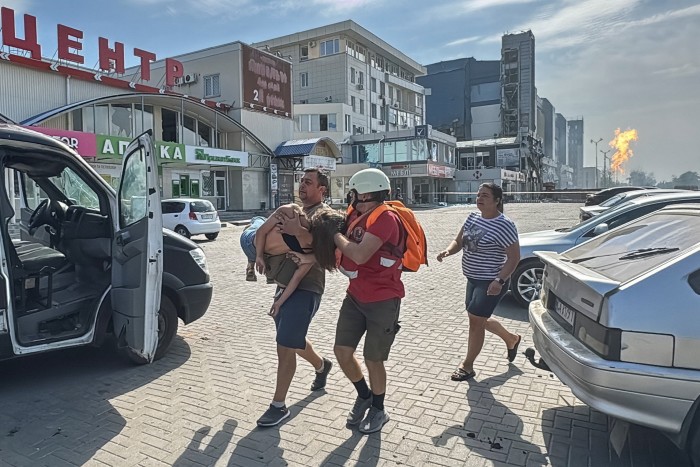
Stay informed with free updates
Simply sign up to the War in Ukraine myFT Digest — delivered directly to your inbox.
Ukrainian forces have continued to lose ground to Russia in the country’s eastern Donetsk region, with Moscow determined not to have its plans to capture the territory undermined by Kyiv’s incursion into Kursk.
The UK’s defence ministry said on X on Sunday that Russian forces were now within 10km of the logistics hub of Pokrovsk, though it added that their advance would probably slow as they approached more built-up areas.
Pokrovsk serves as a thoroughfare to other major Ukrainian-controlled towns in the Donetsk region, such as Kramatorsk and Kostyantynivka, as well as providing road links to central Ukraine. Its capture would undermine Ukrainian forces defence of the rest of the region.
Russia also struck a civilian area of the eastern Ukrainian city of Kharkiv, north of the Donetsk region, on Sunday. The attack injured at least 41 people, according to its regional governor Oleh Synyehubov.
After taking the well-fortified town of Novohrodivka, 12 miles south of Pokrovsk, last week, Russia now occupies at least one village in the surrounding area. Local Telegram groups have reported seeing soldiers in the town of Selydove, also 12 miles from Pokrovsk.
Without naming Pokrovsk, Ukraine’s general Oleksandr Syrskyi said the situation in Russia’s main area of attack remained “difficult”.
Thousands of Pokrovsk area residents have fled their homes over the past three weeks, as the local authorities warned of the approaching troops.
Russia’s continued focus on Donetsk comes despite Ukrainian forces holding what analysts estimate as 1,200 sq km of Russia’s southern Kursk region.
Ukraine’s forces launched a surprise attack into Kursk on August 6. The Kremlin has so far failed to dislodge them, in part because it would prefer to keep troops in Donetsk.
Russia’s military command were “extremely averse to pulling combat effective units from frontline areas” around Pokrovsk and Toretsk, another town in the Donetsk region, assessed the Washington-based think-tank, the Institute for the Study of War, in its daily report on Saturday.

Citing Russian military bloggers, the ISW report said only a company of the Russian 15th Motorized Rifle Brigade, which was previously fighting around Pokrovsk, as well as the 1st Slavic Motorized Rifle Brigade, which was fighting around Donetsk, had appeared in Kursk.
Russia had, however, pulled forces from “lower priority” sections of the frontline in the Kharkiv and Zaporizhzhia regions, it said.
After the Kremlin’s goal of taking Ukraine became increasingly unrealistic over the course of the spring of 2022, Moscow focused on Donetsk and neighbouring Luhansk, which it partly occupied in 2014.
Russia gradually moved through Luhansk region in the summer of 2022 and then moved its focus to Donetsk.
Ukraine, meanwhile, launched its largest-ever drone attack on Russian territory over the weekend. The Russian defence ministry said on Sunday that more than 150 drones, targeting 16 Russian regions, were launched in the early morning
Kyiv has not commented on the attack yet.
In addition to Kursk, Kyiv has targeted the Voronezh, Bryansk and Belgorod regions close to Russia’s border with Ukraine for months.
The Russian defence ministry reported that the Smolensk and Ivanovo regions, which are located further away from the Ukrainian border and have not been reported as targets for drone attacks before, had also been hit.
Eleven drones targeted Russian capital Moscow, its mayor Sergei Sobyanin wrote in his Telegram channel. Sobyanin claimed all of them were shot down. The wreckage of one fell on an oil refinery in Kapotnya, a south-eastern district of Moscow, causing a fire that was later extinguished.
Another fire broke out at the Konakovo hydroelectric power station in Tver region located north from Moscow.